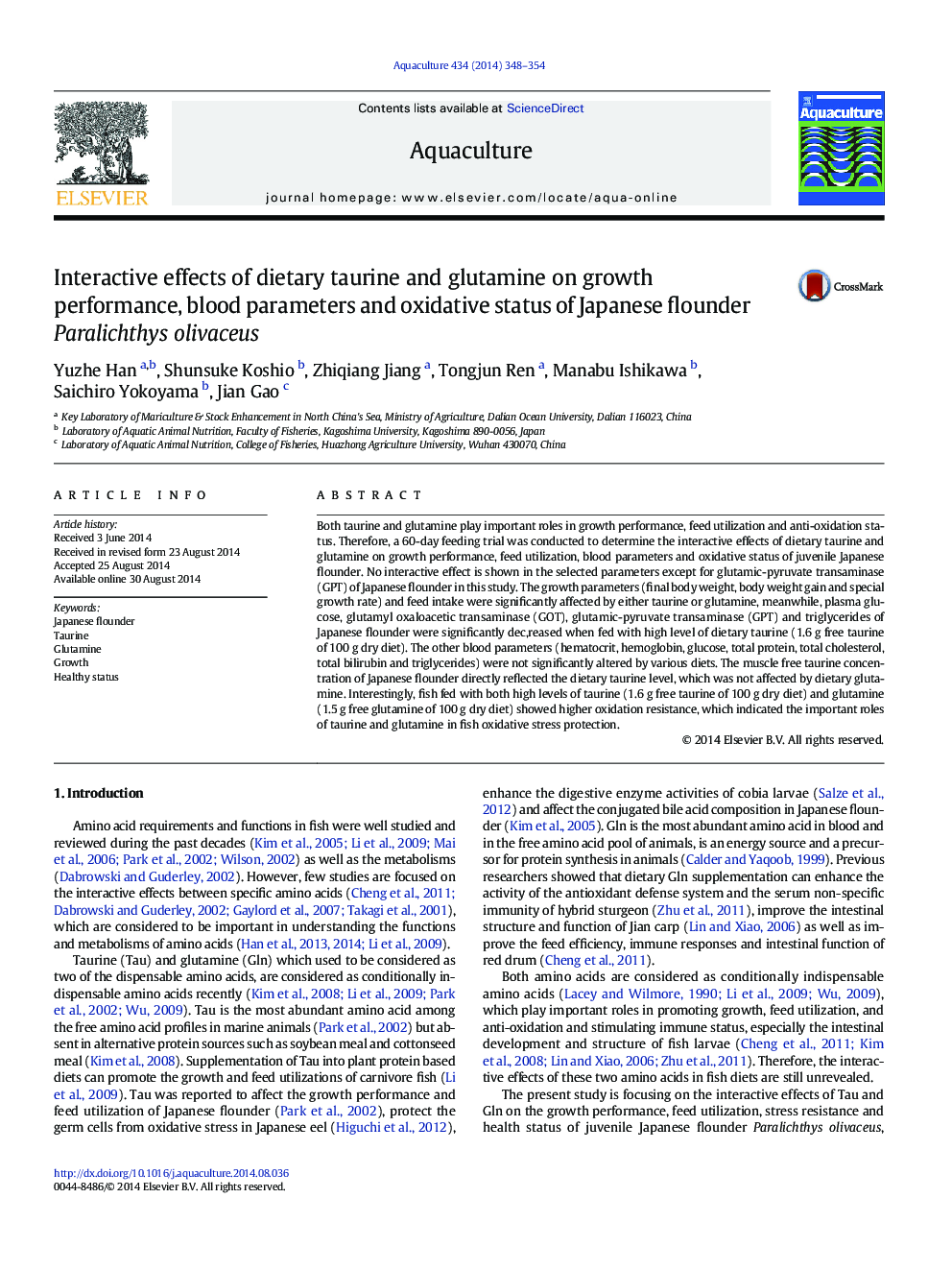| Article ID | Journal | Published Year | Pages | File Type |
|---|---|---|---|---|
| 2421695 | Aquaculture | 2014 | 7 Pages |
•The interactive effects of dietary Tau and Gln on Japanese flounder were estimated.•No interaction was observed in the current study.•High oxidation resistance was found in high dietary levels of Tau and Gln group.
Both taurine and glutamine play important roles in growth performance, feed utilization and anti-oxidation status. Therefore, a 60-day feeding trial was conducted to determine the interactive effects of dietary taurine and glutamine on growth performance, feed utilization, blood parameters and oxidative status of juvenile Japanese flounder. No interactive effect is shown in the selected parameters except for glutamic-pyruvate transaminase (GPT) of Japanese flounder in this study. The growth parameters (final body weight, body weight gain and special growth rate) and feed intake were significantly affected by either taurine or glutamine, meanwhile, plasma glucose, glutamyl oxaloacetic transaminase (GOT), glutamic-pyruvate transaminase (GPT) and triglycerides of Japanese flounder were significantly dec,reased when fed with high level of dietary taurine (1.6 g free taurine of 100 g dry diet). The other blood parameters (hematocrit, hemoglobin, glucose, total protein, total cholesterol, total bilirubin and triglycerides) were not significantly altered by various diets. The muscle free taurine concentration of Japanese flounder directly reflected the dietary taurine level, which was not affected by dietary glutamine. Interestingly, fish fed with both high levels of taurine (1.6 g free taurine of 100 g dry diet) and glutamine (1.5 g free glutamine of 100 g dry diet) showed higher oxidation resistance, which indicated the important roles of taurine and glutamine in fish oxidative stress protection.
